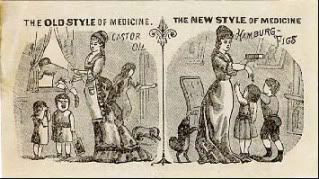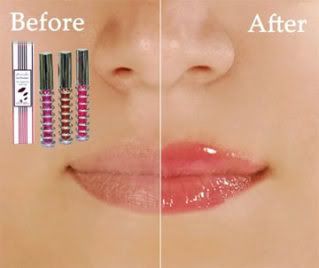• Another example of how social marketing can damage brands
I should be upfront and admit that I don't like Oprah. I can't say why, exactly. Maybe it's her ostentatious displays of generosity. Maybe it's her insistence that everyone show exactly the same upbeat attitude she purports to have. Maybe it's the feeling that her conversion from shock-show host to moral leader of the multitudes and maven of modern literature was predicated on sagging ratings. Maybe it's just that I distrust anyone who can sway the feelings and opinions of millions of people.
Whatever the reason, it certainly isn't because I feel she has somehow personally betrayed me.
Unfortunately, the same cannot be said of her social network followers.
The Silicon Valley Insider reports that although she's only been Tweeting for a shot period of time, and boasts one of the largest followings, "she is already bored" with the experience. "In total, she's sent 20 tweets in 11 days. Almost half are from April 17, Oprah's first day on Twitter, when Ashton Kutcher and Twitter CEO Evan Williams appeared on her show ."1
This defection does not sit well with some. "The reason why Oprah lost on Twitter is because of her lack of commitment to engage her community," says Craig Daitch of Advertising Age.2 "She could give away a G6, sell subscriptions to her magazine and bring huge A-Listers to her show every day -- but being asked to participate in conversation is much different than being asked to spark conversation."
In other words, while these people once loved Oprah because she gives away millions of dollars for social programs, supports worthy causes, provides a role model for women, and encourages literacy, now they are turning against her because she's not spending enough time keeping them updated on her latest meal.
Of course, this backlash is quite mild and unlikely to affect her overall status as the Woman God Sent to Straighten out the World. But in a nutshell, it illustrates one of the most serious problems posed by social network marketing: When your product or service becomes a member of a community, its value becomes dependent upon its participation within that community. As part of the "consumer conversation," so beloved of modern marketers, what it says counts for much more than what it actually does.
It no longer matters how well your product cleans dishes, kills germs, improves your looks or handles on the road, once it's part of the great communal conversation the only thing that counts is how well it can talk. While consumers of old (read, 20 years ago) might have become annoyed if their pain reliever didn't work, modern consumers are ready to become personally insulted at a misguided, but transient commercial on TV: as Motrin found out to their chagrin. 3 The Motrin ad, which incautiously spoke about Moms wearing babies in slings as a fashion accessory, was released as a viral campaign, and the resultant viral backlash turned into a digital pandemic. Those who would otherwise never have seen the offending video were told about it (with links) by their community members and encouraged to take part in the outcry. In trying to join the online community, the company found itself outcast, reviled, and with a large scarlet letter sewn on its chest.
Of course, if it hadn't taken its campaign online, those who felt the need to be offended would still have been able to blog and Twitter about it, and this kind of adverse publicity can attain a critical mass on occasion. In general, however, the isolated nature of these outlets keeps nuisance complaints limited and relatively harmless. But when the company voluntarily either creates or joins a social network, it provides a central pavilion in which every crackpot with an axe to grind can bring his soapbox and be heard. Furthermore, because of the direct connection between the platform and the company, those who gather within it have a natural expectancy that they should be heard and responded to.
Businesses have always had the responsibility to deal with customer complaints and listen to unsolicited suggestions. That's how companies grow. But the social marketing sphere is an echo chamber which so magnifies every casual and meaningless comment that the resultant din can threaten the company's very foundations -- like a digital version of Joshua's trumpeters bringing down the walls of Jerico.
Whatever benefits there may be in marketing through social media, and to date the success stories are still vastly outnumbered by the failures, when things go wrong, they do so in a spectacular fashion.
I've said it before, but it bears repeating: Social network marketing is like sending a company salesman into a Friday-night frat party, and it's not exactly surprising if he gets stripped to his underwear, hung upside down, and covered in beer.
1. Fromm, Dan (2009, April 28).Oprah already bored with Twitter. Silicon Alley Insider, Retrieved April 30, 2009. [Return to text]
2. Daitch, C. (2009, April 28).@Oprah already bored with Twitter? So what?. Siilicon Alley Insider, Retrieved April 30, 2009. [Return to text]
3. Havenstein, H. (2008, Nov. 18). Motrin maker feels pain from social media backlash. TechWorld, Retrieved April 30, 2009. [Return to text]
Read more...









 Anglophone Canadians trembled recently when Lucien Bouchard revealed a secret American plan to annex Western Canada in the wake of Quebec separation. And while the Bloc Quebecois Leader later denied making such statements (by arguing "I would be crazy. Am I crazy? Am I crazy? Do I look crazy?"), his skilled rhetoric came too late to quell Anglo anxieties.
Anglophone Canadians trembled recently when Lucien Bouchard revealed a secret American plan to annex Western Canada in the wake of Quebec separation. And while the Bloc Quebecois Leader later denied making such statements (by arguing "I would be crazy. Am I crazy? Am I crazy? Do I look crazy?"), his skilled rhetoric came too late to quell Anglo anxieties.

